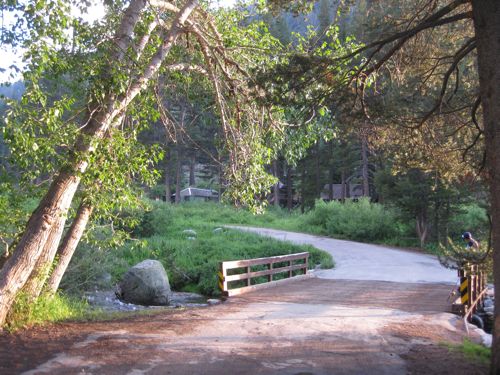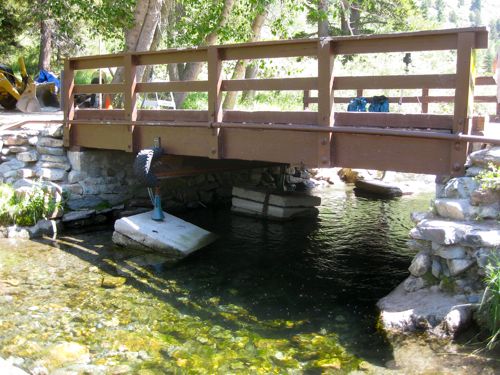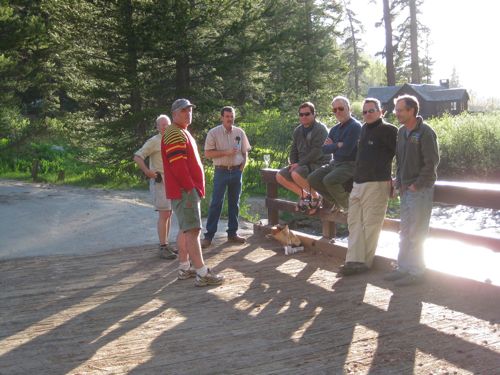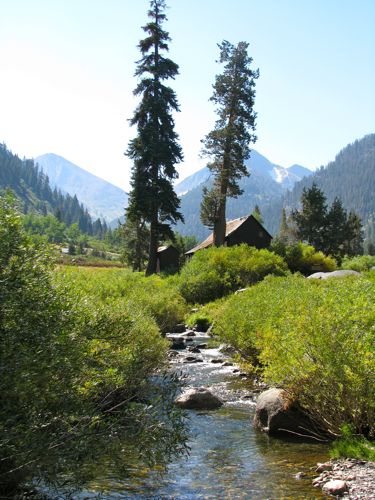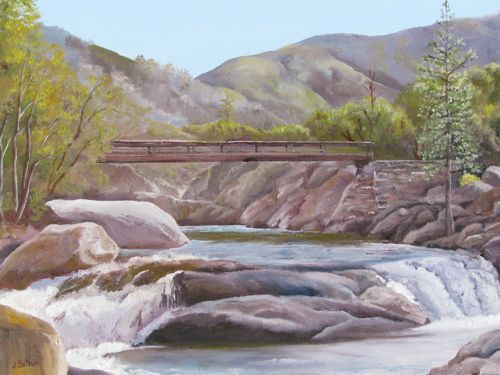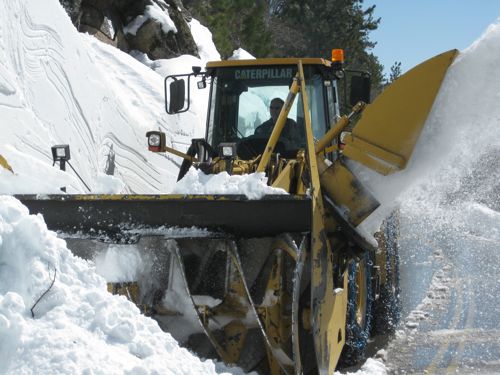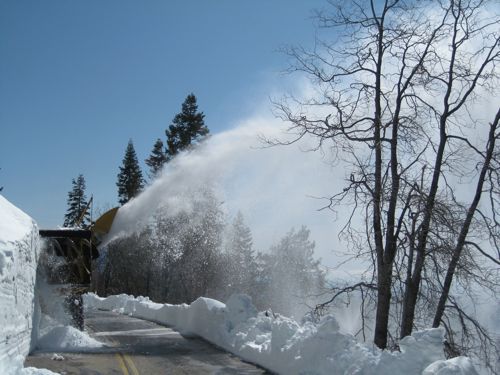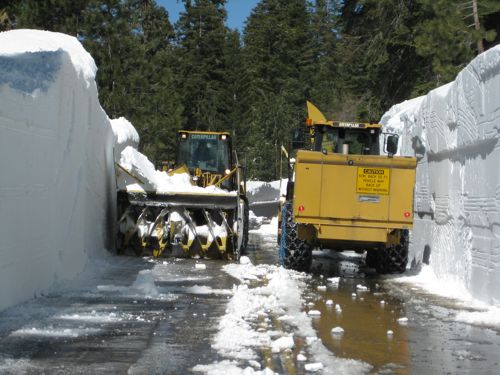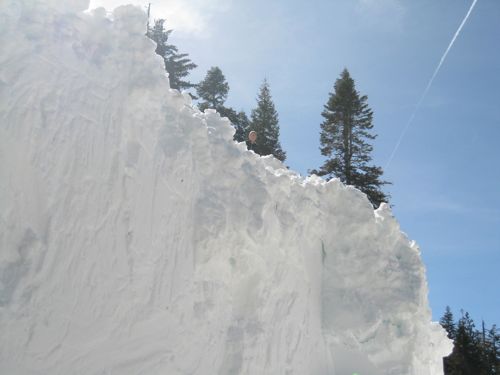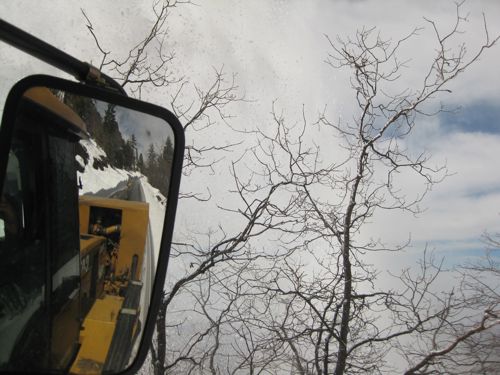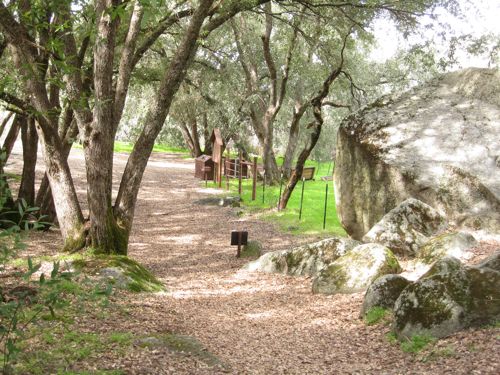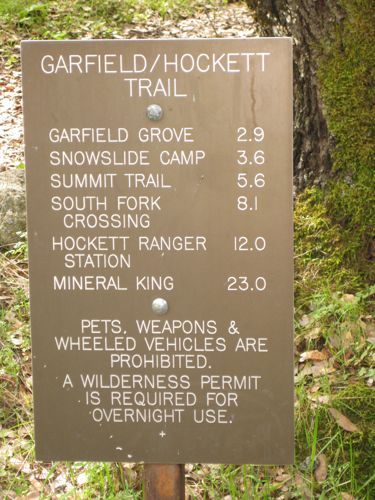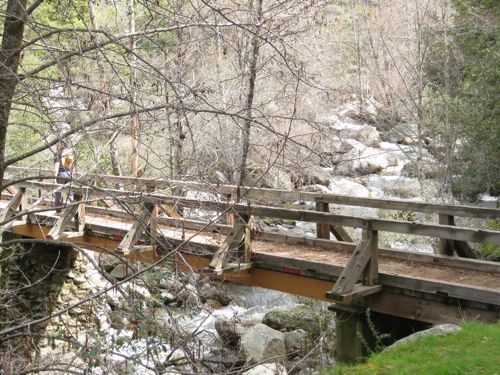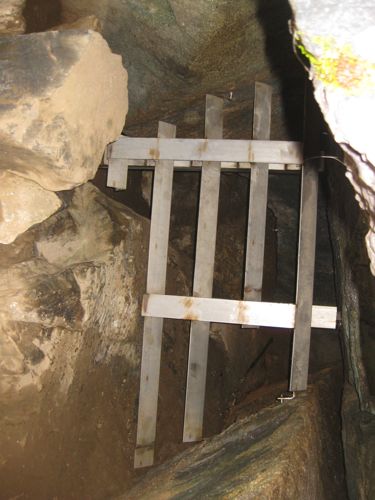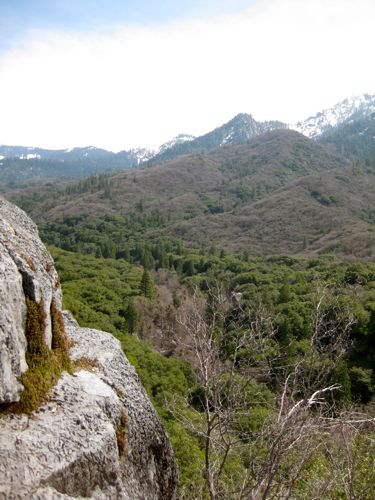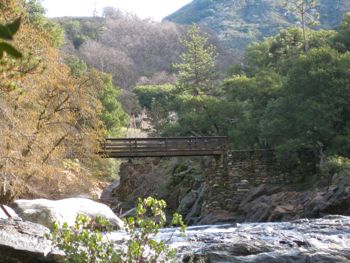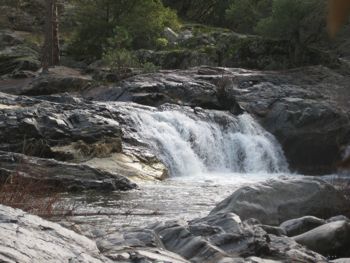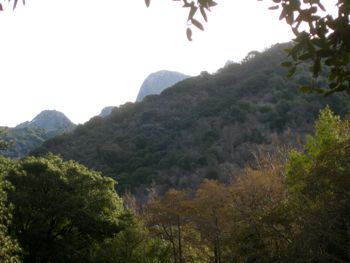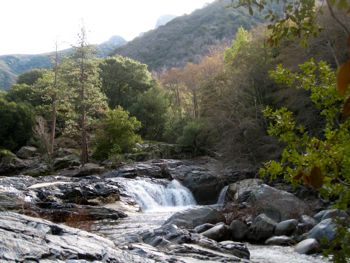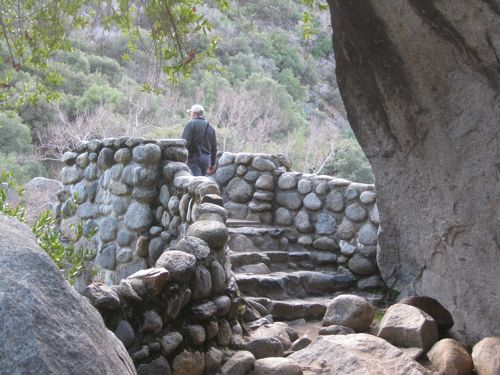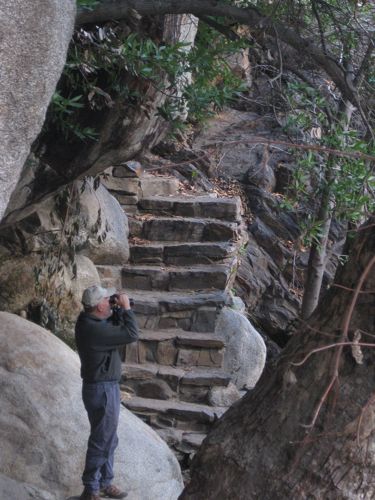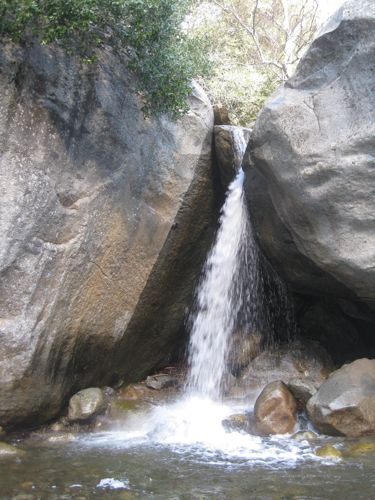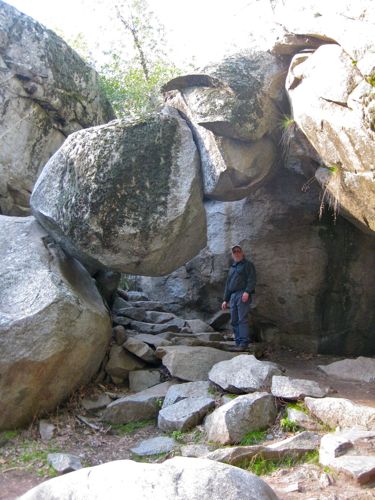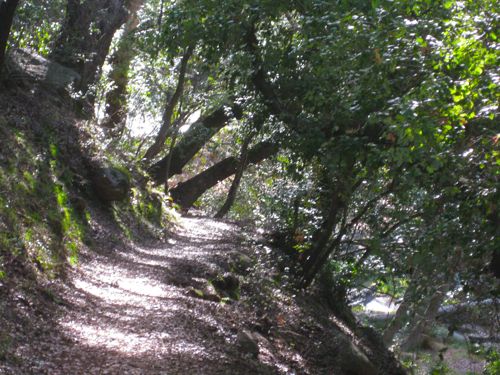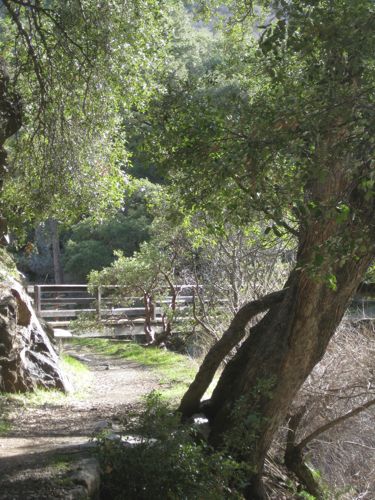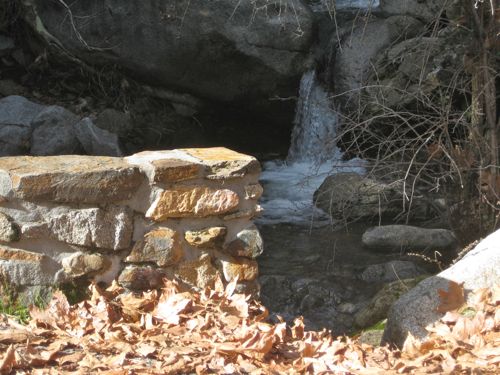Because Mineral King is one of my main sources of inspiration, and many of my readers love Mineral King, there will be several posts about this bridge project. If you only read the blog for the art, stay tuned, because the project won’t last forever and will only have 1 or 2 entries a week until its completion.
At the end of the road in Mineral King, Sequoia National Park, is a bridge. It spans the currently low and slow flowing East Fork of the Kaweah River. On the other side of the creek (“river”) is a parking lot, trailhead, and a handful of cabins.
A few years ago Federal Highways bridge inspectors came to Mineral King and declared the bridge unsafe. A sign was posted to prohibit any vehicle over 4 tons (8000 lbs) from crossing the bridge. It was shored up with some jacks and I-beams, which were inelegantly covered with tires. Engineers got involved, plans made and a prefabricated bridge has been purchased to replace the existing bridge.
The bridge is a hang-out place.
The view is incomparable, spectacular, the most photographed view in Mineral King, and possibly within all of Sequoia.
This could be a long story, so stay tuned for the next chapter tomorrow, Same Bat-Time, Same Bat-Channel.
